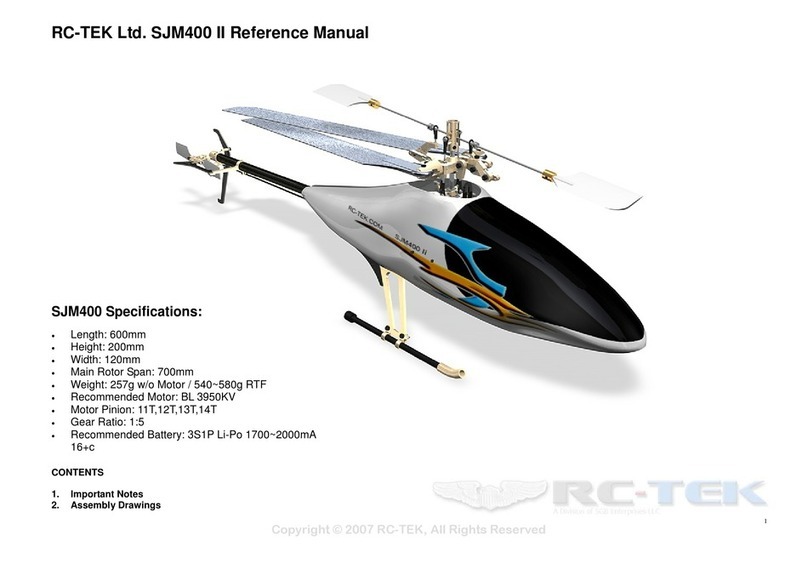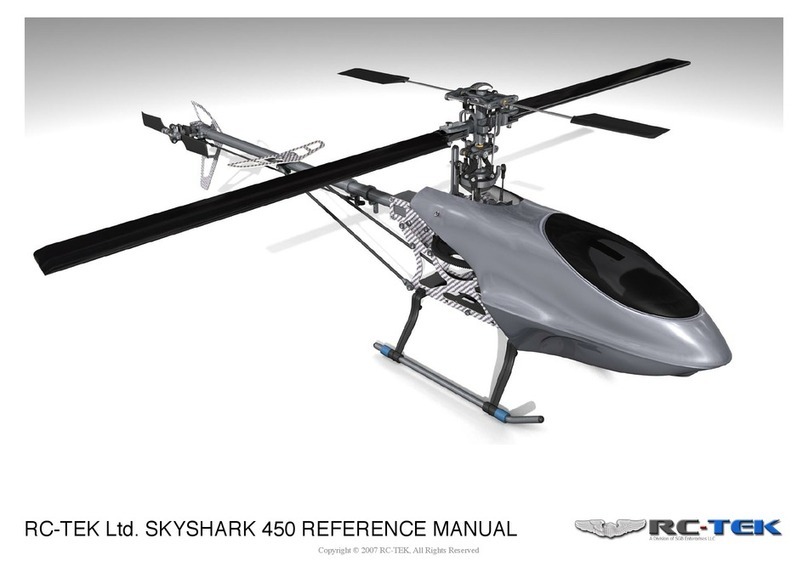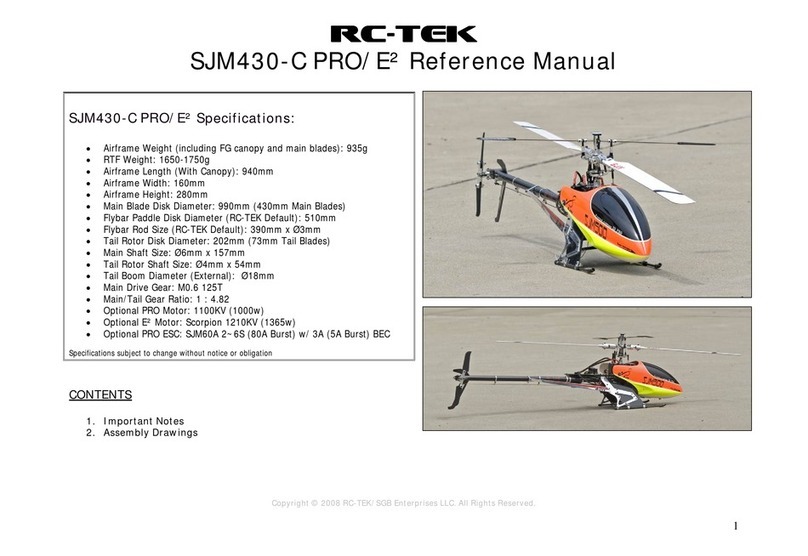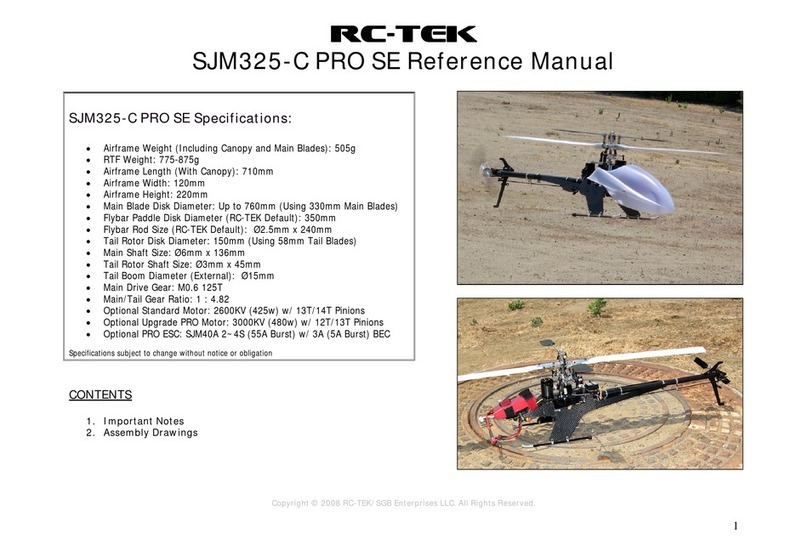
PARTS
PKGNO. NAME SPECIFICATION QUALITY UNIT
MT8027 Main boom M11×295.4 1 pcs
PS8001 Belt 205 1 pcs
MT8001 Unit housing 1 set
MT8028 Transmission shaft 2×42 1 pcs
PS8003 Transmission gear 20T 1 pcs
Wheel fend 1 pcs
Top ring 3.5×2×1.5 1 pcs
BR8003 Bearing 2×6×H2.5mm 2 pcs
SC8004 Cap screw M2×10mm 4 pcs
SC8007 Set screw M3×3mm 1 pcs
SC8017 Round head screw M1.6×4mm 4 pcs
MT8002 Back servo mount 1 pcs
MT8003 Tail shaft housing 1 pcs
MT8004 Tail servo mount 2 pcs
MT8005 Boom support stand 1 pcs
MT8006 Strengthen device 1 pcs
MT8007 Tail housing tighten device 1 pcs
MT8008 Gyro board link 1 pcs
FG/CF8002 Gyro board 1 pcs
FG/CF8002 Beam board 1 pcs
FG/CF8001 Vertical blade 1 pcs
BR8004 Bearing 3×9×H2.5mm 2 pcs
MT8023 Underlay 2.5 2 pcs
Underlay 3×5×H0.5mm 1 pcs
Tail shaft underlay 3×5×H1.7mm 1 pcs
SC8011 Countersunk screw M1.6×6mm 1 pcs
SC8013 Countersunk screw M2×3mm 2 pcs
SC8017 Round head screw M1.6×4mm 4 pcs
SC8002 Cap screw M2×5mm 10 pcs
SC8003 Cap screw M2×8mm 1 pcs
SC8009 Cap screw M2×12mm 2 pcs
MT8029 Tail shaft M3×37.5mm 1 pcs
SC8008 Cap screw M2×4mm 3 pcs
MT8009 Tail blade set 1 set
MT8010 Pad pillar 2×4×10mm 1 pcs
SC8005 Cap screw M2×16mm 1 pcs
BR8003 Bearing 2×6×H2.5mm 2 pcs
MT8010 Angel adjusting arm 1 set
MT8011 Sliding shaft set 1 set
PS8002 Main gear 1 pcs
MT8033 Main gear bolt 1×11 1 pcs
FG/CF8003 Fixing board pad pillar 4*10.2mm 2 pcs
MT8012 Main shaft stand 1 set
MT8030 Main shaft 1 pcs
MT8022 Main shaft fixing ring 1 pcs
MT8013 Swash plate 1 pcs
Fixing board set 1 pcs
Fixing board 1 pcs
Up servo mount 1 pcs
Down servo mount 1 pcs
BR8005 Bearing 4×8×H4mm 2 pcs
SC8004 Cap screw M2×10mm 4 pcs
SC8003 Cap screw M2×8mm 2 pcs
SC8005 Cap screw M2×16mm 2 pcs
SC8002 Cap screw M2×5mm 4 pcs
NU8001 Nut M2 2 pcs
MT8023 Underlay 2.5 4 pcs
SJM180(215) PARTS LIST
FG/CF8003
4
MT8028
MT8029
1
2
3
FG/CF8002
































